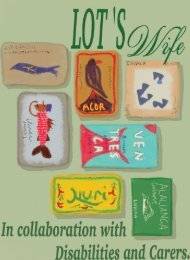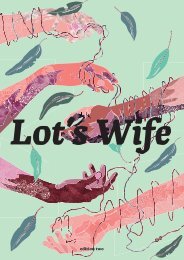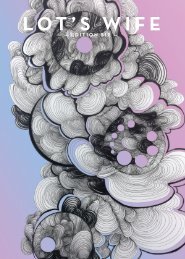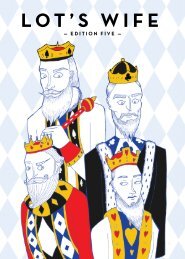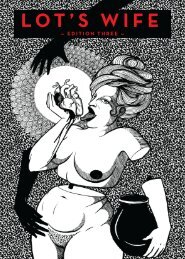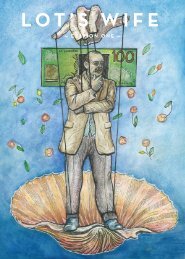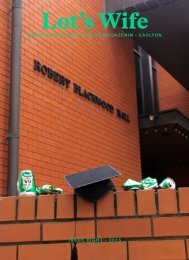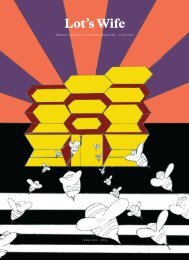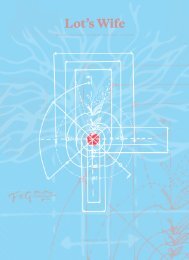Lot's Wife Edition 1 2021
You also want an ePaper? Increase the reach of your titles
YUMPU automatically turns print PDFs into web optimized ePapers that Google loves.
Lot’s <strong>Wife</strong> • <strong>Edition</strong> One<br />
“We now have, in federal terms, a clear sort of segregation<br />
between the big southern cities where Labor does well, and the<br />
outlying states,” he said.<br />
“It goes to demographics, things like education levels, income,<br />
the rural-regional versus city divide… this sort of phenomena<br />
has been seen everywhere, even in the US election we’ve just<br />
witnessed.<br />
The LNP has continued to receive a primary vote above 40%<br />
in federal elections in Queensland. DATA SOURCE: Australian<br />
Electoral Commission, Australian Parliament. Interactive<br />
Chart Link<br />
Since 1993, Labor has only won a majority of Queensland’s<br />
federal seats once, that being at the 2007 election under Kevin<br />
Rudd, himself a Queenslander.<br />
“Labor federally has particular problems appealing to a<br />
Queensland constituency as we saw in the 2019 federal election,<br />
where it was problems about the Adani Mine [and] climate<br />
change,” he said.<br />
This is a division which Chris Salisbury said is increasingly<br />
evident within Queensland itself, with governing increasingly<br />
becoming a “straddling the fence” exercise between the state’s<br />
different regions.<br />
Labor’s loss of the previously safe seat of South Brisbane to<br />
the Greens in the most recent state election demonstrates the<br />
increasing diversity of views across Queensland.<br />
Despite this growing diversity, an analysis of voting data<br />
from the 2020 election reveals that both Labor and the LNP<br />
increased their primary vote by 4.15 per cent and 2.21 per cent<br />
respectively.<br />
The increased primary vote for the major parties appears to<br />
have been at the expense of One Nation, which saw its primary<br />
vote fall by 6.61 per cent while other minor parties remained<br />
stable.<br />
Labor’s 2007 federal election victory saw it win only two more<br />
seats than the Coalition in Queensland. DATA SOURCE: Australian<br />
Electoral Commission, Australian Parliament. Interactive<br />
Chart Link<br />
Since the merging of the Liberal and National parties into the<br />
LNP a year later, Labor’s primary vote has fallen by an average<br />
of 4 per cent every federal election.<br />
Associate Professor Strangio remains sceptical as to whether<br />
the 2008 merger contributed to this trend.<br />
“It’s hard to credit that given that you would think that would<br />
also pave the way for success at the state level,” he said.<br />
“The federal success of the LNP may instead be due to a distinction<br />
by Queenslanders between state and federal issues,<br />
with the federal Coalition being viewed as a better manager of<br />
the economy and national security,” Dr Strangio said.<br />
The primary votes for the Greens and Katter Australia Party<br />
remained stable at the 2020 state election despite the swing<br />
back to major parties. DATA SOURCE: Electoral Commission<br />
Queensland. Interactive Chart Link<br />
“It’s a very underwhelming performance It lost half of its primary<br />
vote at this election,” Dr Salisbury said.<br />
55




